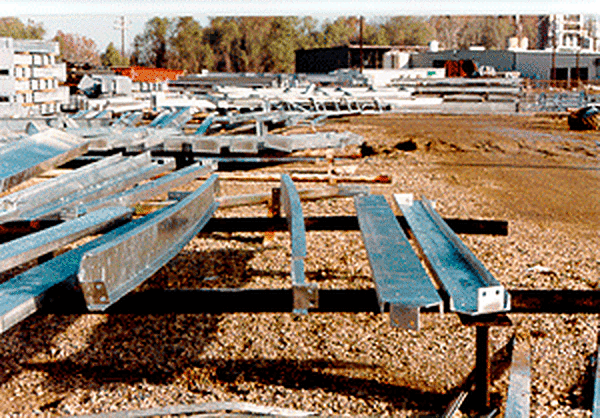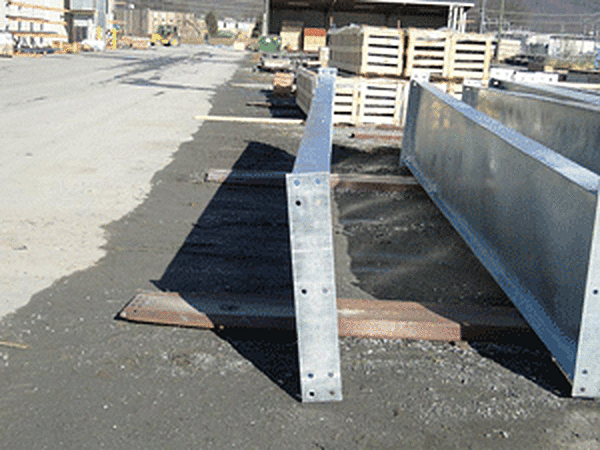Asymmetrical Piece Challenges
Because the design of a part was not symmetric, I wasn't sure I could galvanize it. When I did try to galvanize it, the part twisted up and was not usable. What can I do about this?

The design of parts to be hot-dip galvanized is the responsibility of the design engineer and the architect; however, when there is a part that has an asymmetric design the galvanizer should let his customer know the part is very likely to distort during the galvanizing process. Many times the customer replies to dip it, but dont let it distort. If you proceed from that point, the customer will blame you for any distortion that occurs. If the customer asks you to dip the part after he was told it might distort, you should send a written note stating you are not responsible for any distortion that occurs, since you warned him in advance distortion could occur. ASTM A384 explains different types of potential distortion design issues that can occur while galvanizing.
The most common distortion issue is the assembly of two different thicknesses of steel through welding. When these two steels are put into the galvanizing kettle and brought up to galvanizing temperature, the thermal expansion proceeds at a different rate for each thickness of the material. This can put a considerable stress on the thinner material as it tries to expand more rapidly than the thicker material, but the welding together of the two materials does not allow for any movement separately. Since the thinner material cannot move near the weld joint, it often relieves the stress build-up by distorting away from the weld joint. Some common designs that have this issue are cages where the frame is heavier thickness steel, and the screen or mesh is much thinner steel. Other designs have thin sheet steel as the panel inside a heavier steel frame, such as fencing or decorative items. The distortion of the thin steel can sometimes be removed after galvanizing, but other situations cannot be repaired. Another design issue that can result in distortion is the asymmetrical assembly of steel pieces into a part to be galvanized, as in Figure 2.

The design of the part in the picture includes a top flange from channel material but has no corresponding bottom flange to make the design symmetric. This allows the buildup of stress during the thermal expansion of the part in the galvanizing kettle to be relieved by distorting the entire piece from one end to the other, following the most likely rolling direction of the steel used for the web portion of this part. Even symmetric assemblies can distort if they are constructed of very thin sheet steel. Steel that is thin and bent into a particular shape can distort during the galvanizing process as the thin steel expands during the few minutes the part is in the 850 F galvanizing kettle. The high temperature induces a softening in the sheet steel and performs a stress relief of the mechanical stresses induced during the cold bending of the sheet. This stress relief can start a distortion of the parts shape in the galvanizing kettle. A temporary or permanent brace may be added to the design to prevent this distortion from occurring.
© 2024 American Galvanizers Association. The material provided herein has been developed to provide accurate and authoritative information about after-fabrication hot-dip galvanized steel. This material provides general information only and is not intended as a substitute for competent professional examination and verification as to suitability and applicability. The information provided herein is not intended as a representation or warranty on the part of the AGA. Anyone making use of this information assumes all liability arising from such use.

